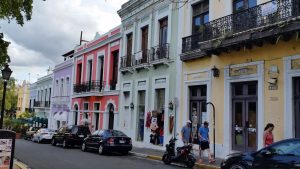
Global Auto Transportation offers reliable car shipping services to and from Puerto Rico, accommodating both personal and commercial needs. Whether relocating, purchasing a new vehicle, or transporting a car for seasonal use, our team ensures a seamless process. We provide cost-effective open carrier options for standard vehicles, as well as enclosed auto transport for luxury, classic, or high-value cars, ensuring secure and timely delivery.
Puerto Rico Car Shipping Services by GAT
Our range of services includes shipping for various types of vehicles:
- Auto Shipping
- Motorcycle Shipping
- Bus Shipping
- Boat Shipping
- Van Transportation
- Truck Transportation
- Trailer Transportation
With expedited shipping available, you can count on timely delivery to meet your schedule. Our door-to-door service further enhances convenience, as we pick up and deliver directly to your preferred location, whether in Puerto Rico or across the mainland.
Why Choose Global Auto Transportation for Puerto Rico?
Choosing Global Auto Transportation means reliable, secure service with benefits like:
- Safe, Timely Delivery: Vehicles are transported with the utmost care, arriving securely and on time.
- Custom Transport Options: Select from open or enclosed transport based on your vehicle’s needs.
- Expedited Shipping: Ideal for urgent transport requirements, ensuring prompt service.
Start Your Vehicle Transport to or from Puerto Rico Today
Looking to ship your vehicle to or from Puerto Rico? Contact Global Auto Transportation at (888) 803-0501 for a Free quote and experience professional, worry-free vehicle transport with every detail handled for you.